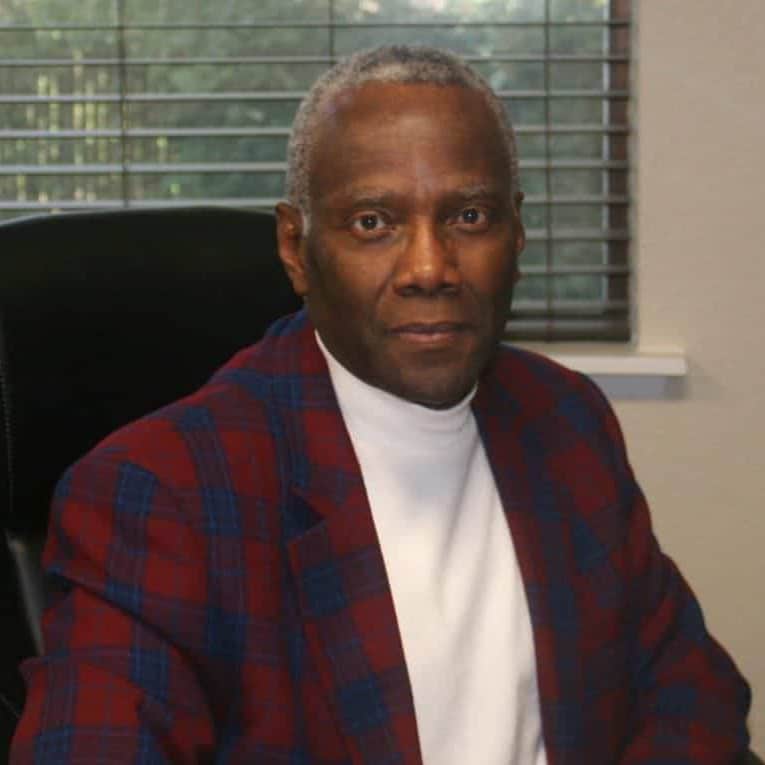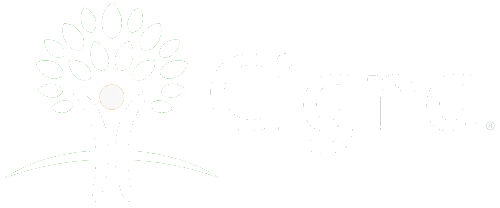LSD, or acid as it is also called, was first developed in the 1930s in Switzerland by a doctor seeking to patent a respiratory stimulant. At first, the hallucinogenic properties of LSD were not noticed but were discovered years later when the chemical was accidentally ingested through his fingers. This drug was first brought to market medically by pharmaceutical companies looking for a treatment for various severe mental illnesses, such as schizophrenia or dementia.
It did not prove successful at treating mental illness. Unfortunately, this substance is primarily abused as an illegal street/party drug. Used for its hallucinogenic properties, LSD has become one of the most widely abused recreational drugs-finding a particular niche at music festivals, dance clubs, and other spots where inhibitions are left behind. This means the need for LSD addiction treatment is becoming more necessary.
What is LSD?
LSD (also known as acid, trips, dots, or Lucy) stands for Lysergic acid diethylamide. It is a synthetic drug made from a substance found in a fungus called “ergot”. LSD is part of a group of drugs called psychedelics. Psychedelics are labeled as such because they can produce significant changes in perception of reality, known as “trips”. Small doses can produce minor changes in mood or perception while large doses can produce full-scale hallucinations and distortions of reality.
What is sold as LSD can often be another group of even more dangerous chemicals, known as “2C drugs”. These drugs can be extremely dangerous due to inconsistencies in quality and ingredients. Serious side-effects and even death have been reported from taking substances labeled as LSD that were not.
LSD is most commonly encountered as an odorless, colorless crystalline substance. However, because acid is so potent, doses large enough to produce a “trip” may not even be recognized. Because of its inconspicuous appearance, LSD is often mixed or diluted with other materials. The most commonly abused form of LSD is liquid solution dried onto something sugary, such as gelatin, gummies, or sugar cubes. This drug can also be sold as a liquid or in tablet and capsule form.
Becoming Addicted to LSD: How Does LSD Tolerance and Addiction Develop?
 Due to its potency, tolerance to LSD works differently than with other often abused drugs. Since LSD has such a powerful psychotropic effect in such a small dose, the amount needed to produce a “high” does not increase by much.
Due to its potency, tolerance to LSD works differently than with other often abused drugs. Since LSD has such a powerful psychotropic effect in such a small dose, the amount needed to produce a “high” does not increase by much.
Generally, tolerance is produced when a larger amount of a given substance is needed to produce the same high. Tolerance usually develops with the continued use of a substance over time and often continues to addiction that cannot be escaped without professional help. Tolerance to LSD is different than with other drugs more commonly associated with substance abuse and addiction.
LSD use differs, however, because tolerance can develop in just one or two uses due to the powerful effects. Additionally, most people who use this drug will experience a different psychotropic effect from one trip to the next. LSD’s potency causes many users to use it only occasionally, and many even recover full sobriety in between uses.
Due to these factors, most people who use LSD do not usually develop the compulsive behaviors most often associated with hardcore drug addiction. While acid is not usually considered physically habit-forming, the more one uses acid the more likely they are to experience a “bad trip”, or other serious side effects. Breaks from reality caused by LSD use are also associated with a much greater risk of automobile accidents and other dangerous occurrences.
Psychological Effects of LSD Usage
The effects of LSD are usually felt relatively soon after ingestion. Within 30 minutes, a user can experience changes in smell, sights, and sounds. Depending on the amount taken, users may also have an “out of body experience” where they feel disconnected from reality or it seems like they are observing themself from outside. Reality can become distorted and users will often feel fearless or take risks they wouldn’t otherwise take.
 Although LSD has existed for decades, scientists are only recently beginning to understand the effect this drug can have on the human brain. Studies show that LSD use impacts serotonin (a chemical neurotransmitter that impacts behavior and mood) production. Acid can also have an impact on the regulatory systems of the body in such a way as to produce the aforementioned “out of body experience”.
Although LSD has existed for decades, scientists are only recently beginning to understand the effect this drug can have on the human brain. Studies show that LSD use impacts serotonin (a chemical neurotransmitter that impacts behavior and mood) production. Acid can also have an impact on the regulatory systems of the body in such a way as to produce the aforementioned “out of body experience”.
While symptoms can differ wildly by person, the general psychedelic effects of LSD often include:
- Distortions of reality, including visual and auditory hallucinations
- Intense experiences of all 5 senses, including sensitivity to sound and flashing lights
- Feelings of euphoria
- Experiencing “synesthesia”, which is understood as “blending” of senses (hearing colors or seeing music)
- Dilated pupils
- Increased sweating
- Dizziness and nausea
- Wild mood swings
- Rapid heart rate
- Insomnia
What is a “Bad Trip?”
Everyone experiences LSD use differently. Some people may have a pleasant or even euphoric experience, but others may have a terrifying encounter on their first or 100th use. The dangers of a “bad trip” are many, and this experience usually involves frightening hallucinations, disorientation, panic attacks, or irrational fears. These scary effects can lead users to react in dangerous or even violent ways, including self-harm, suicidal ideation, or attacking people randomly. While LSD is seen as a happy-go-lucky party drug, the potential experiences can be dangerous and even deadly.
Long-Term Health Effects of LSD Abuse
 Even doctors who believe LSD can have health benefits agree that LSD use should only be confined to extremely controlled environments. While the most common health issue associated with LSD use is the aforementioned “bad trip”, there are also serious risks associated with long-term usage.
Even doctors who believe LSD can have health benefits agree that LSD use should only be confined to extremely controlled environments. While the most common health issue associated with LSD use is the aforementioned “bad trip”, there are also serious risks associated with long-term usage.
Many LSD users report having flashbacks or even hallucinations randomly well after using. This side-effect is usually known as Hallucinogen Persisting Perception Disorder (HPPD), and it can produce psychiatric effects years after LSD use has ended. These symptoms can be quite serious and can escalate to where they interfere with normal life functions. HPPD can produce “trips” that can, seemingly at random, disorient someone. These effects are particularly dangerous while driving, walking, or doing anything where body control is paramount.
LSD use is also associated with long-term mental health damage, known specifically as “persistent psychosis”. Symptoms of persistent psychosis can be similar to schizophrenia and include mood changes, erratic behavior, inability to concentrate on or complete tasks, and disengaging from family or friends.
LSD Withdrawal Symptoms
While acid does not cause the same level of chemical dependence as other substances, LSD withdrawal can still produce painful and dangerous side effects. LSD works differently than alcohol, for example, because alcohol develops a chemical dependence through creating chemical imbalances in the brain—often requiring medical detox for alcohol to ensure safe and supervised withdrawal.
LSD does cause tolerance, but that tolerance generally subsides after a few days, often with little to no cravings or discomfort. This means that LSD dependence is usually psychological and not chemical, so the symptoms of withdrawal can vary greatly from person to person. However, someone experiencing acid use problems should seek LSD addiction treatment. It is important to consult with medical professionals and anticipate a necessary withdrawal period under supervision from a doctor.
Some of the most common physical effects of LSD withdrawal are:
- Anxiety
- Depression or mania
- Insomnia and restlessness
- Nausea and discomfort
- Headaches and body aches
LSD Addiction Treatment
Thankfully, there are many excellent treatment options for those struggling with LSD addiction, and at Free By The Sea, we offer most of them.
Residential Treatment for LSD Addiction
Inpatient treatment is often recommended if someone is struggling with multi-substance addiction or a co-occurring psychiatric condition, such as schizophrenia, or HPPD. Inpatient care may also be the best option if someone has struggled with relapse or has tried and failed at the outpatient rehabilitation process. Many individuals who have severe or longstanding addictions find inpatient treatment to be extremely effective and the piece of the puzzle to achieving sobriety.
These inpatient programs typically require an on-campus stay anywhere from 30-90 days, with varying levels of observation depending on addiction level. This type of treatment allows patients to focus completely on their recovery while leaving the details up to the trained staff. It also allows patients to be surrounded by caring people who understand what they are going through and have their best interests at heart.
Residential rehab programs require patients to live at the facility full-time for 30–90 days while receiving treatment. This intensive atmosphere allows patients to focus 100% of their energy on recovery and provides a supportive network of clinicians, staff, and other patients in various stages of their recovery.
Outpatient Treatment for LSD Addiction
 Inpatient treatment can be extremely effective at treating LSD addiction but it is not for everyone. For many people, the convenience and freedom of an outpatient experience will prove to be their best option. Outpatient LSD addiction treatment programs vary in intensity and duration as well as providing different services depending on circumstances.
Inpatient treatment can be extremely effective at treating LSD addiction but it is not for everyone. For many people, the convenience and freedom of an outpatient experience will prove to be their best option. Outpatient LSD addiction treatment programs vary in intensity and duration as well as providing different services depending on circumstances.
Outpatient treatment can be as simple as a weekly visit with a therapist or 3 to 5 visits a week of differing length. At Free By The Sea, our outpatient program provides for the opportunity to attend support groups, 12-step programs, and one-on-one counseling. It is our mission to help you find a care plan that is right for you. Most patients attend outpatient therapy for 1-3 months as needed.
Two of the most popular methods utilized by addiction therapists are cognitive behavioral therapy (CBT) and motivational interviewing (MI).
Cognitive Behavioral Therapy – CBT works by helping patients develop changes in their thinking patterns to help manage stress or addiction. Through sessions with trained therapists, patients will learn to harness negative or harmful thoughts and focus on coping mechanisms that drive change.
Motivational Interviewing – Often, the hardest part about addiction recovery is finding the motivation to change. Ingrained habits and chemical dependency make finding this motivation a difficult first step. The goal of motivational interviewing is to help patients move to the point where they want to be healthy and have the energy to tackle recovery on their own. Using the motivational interviewing approach, therapists assess a patient’s readiness to change and make a plan for increasing their resolve through rewards and other means.
Begin Your Recovery Journey at Free By The Sea Today!
The first step in any recovery journey is admitting you need help. If you or a loved one have crossed that bridge, we at Free by the Sea are ready to help you to the finish line. At Free by the Sea, we are committed to providing top-notch care with an unmatched level of personal touch. Whether you are seeking simple advice, one on one counseling, or intensive inpatient care, we have an option that can meet your circumstances and help you find peace.
At Free by the Sea, we have an incredibly professional staff, first-class amenities, and caring doctors to meet you where you are. Our staff works hard to provide an amazing treatment program that will help you or your loved one gain the skills and resources needed on the road to recovery. If you or someone you love need our world-class options, contact us today to learn how we can help you!

Dr. Richard Crabbe joined our team in 2019 as our psychiatrist and medical director. He attended the University of Ghana Medical School where he became a Medical Doctor in 1977. From 1978 through 1984, he was a medical officer in the Ghana Navy and provided a variety of services from general medicine to surgeries. He received his Certificate in General Psychology from the American Board of Psychology and Neurology in 2002.
Insurances We Accept
Free by the Sea recognizes the importance of having insurance to receive addiction treatment. Let us work with you to provide you or a loved one with premier addiction treatment services. We accept several private insurance plans. Verify your rehab coverage with us today to ensure you receive the support that you need! Find out if you are covered today!











